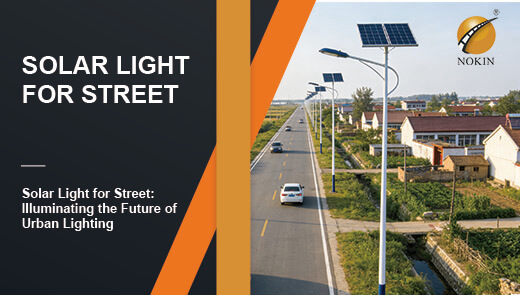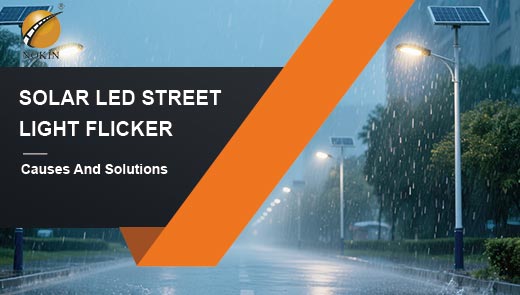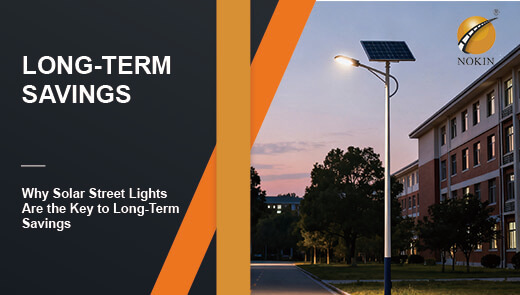Benefits and Application of Solar Street Light with Sensor
Driven by the global energy crisis and the awakening of environmental protection awareness, urban lighting systems are undergoing a revolutionary transformation from traditional to intelligent. As the core representative of this change, solar street light with sensor integrates renewable energy technology and intelligent sensing technology, which not only redefines the energy efficiency standard of outdoor lighting, but also provides a key solution to build a low-carbon, safe and ecological smart city. In this article, we will comprehensively analyze the value of the whole industry chain of this innovative lighting technology from the technical principle, core advantages, application scenarios to the purchase guide.
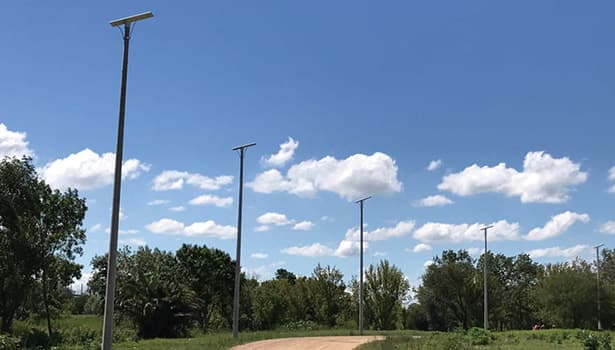
What is Solar Street Light with Sensor?
Solar street light with sensor is a set of integrated intelligent lighting system, with solar photovoltaic panels as the energy collection end, lithium batteries as the energy storage unit, combined with a variety of intelligent sensors and LED light source, forming a complete closed loop of “collection - storage - intelligent control - lighting”. The core breakthrough lies in breaking the traditional street light “full-time full-power” working mode, real-time sensing environmental changes through sensors, dynamically adjusting the lighting strategy, and realizing the precise management of “on-demand light supply”.
3 Core Sensors of Solar Street Light with Sensors
PIR Human Motion Sensor
As the “nerve center” of intelligent lighting, the PIR (Passive Infrared) sensor recognizes moving targets by detecting changes in infrared radiation emitted by the human body. Its sensitivity is specially tuned to filter out false trigger signals generated by small animals or vehicle movement and responds only to human activity. When a pedestrian or non-motorized vehicle is detected approaching, the sensor transmits the signal to the controller within 0.5-1 seconds, triggering a light brightness boost.
Morning and Dusk Auto Sensor
The sensor is based on the photoresistor principle and can monitor the change of ambient light intensity in real time. When the light level drops to the preset threshold (usually 5-10lux) at dusk, the sensor automatically sends a command to turn on the lights; when the light level rises to the threshold (about 10-15lux) at dawn, it sends a command to turn off the lights. This fully automatic operation mode completely solves the pain point of the traditional street light that needs to be switched on and off manually, especially suitable for unattended areas.
Light Intensity Adjustment Sensor
Unlike the previous two switching controls, the light sensor is an analog adjustment device. It can automatically adjust the output power of the LED light source according to the brightness of the environment: late at night when no one is around, the light sensor detects that the surrounding environment has become dark, and it will reduce the brightness of the light to 20%-30% of the energy-saving mode; when there are pedestrians or vehicles passing by, and the PIR sensor is triggered, the light sensor will collaborate to raise the brightness to 80%-100%, forming a “sleep - wake up - bright”. When a pedestrian or vehicle passes by, the light sensor will raise the brightness to 80%-100%, forming a dynamic adjustment mechanism of “Dormant - Wake Up - Bright”.
6 Benefits of Solar Street Light with Sensor
Up to 80% Energy Consumption Reduction
Energy waste of traditional lighting
According to statistics, municipal street lighting accounts for about 35%-40% of the energy consumption of urban public facilities, and traditional high-pressure sodium street lights run 24 hours a day throughout the year, with more than 50% of the ineffective lighting energy consumption in the late-night to early-morning hours (23:00-5:00). In a medium-sized city (50,000 streetlights), for example, the annual power consumption of traditional streetlights can reach 120 million degrees, equivalent to the energy consumption of 40,000 tons of standard coal.
The energy-saving miracle of intelligent dimming is realized
solar streetlights with sensors maintain basic lighting at a low brightness of 20% during unoccupied hours and instantly increase the brightness when there are people moving around by using the “Lighting on Demand” mode. Measured data show that the actual high power running time of streetlights in this mode only accounts for about 30% of the traditional mode. Combined with high-efficiency solar panels (conversion efficiency ≥22%) and lithium battery storage (cycle life ≥3,000 times), the comprehensive energy consumption is reduced by 75-80% compared with that of traditional streetlights.
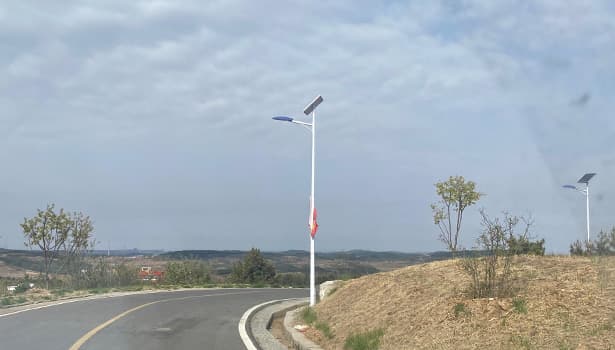
Optimization of Maintenance Cost in the Whole Life Cycle
Significant extension of lamp life
Conventional street lamps run at full load all year round, the light decay of LED light source is accelerated, and the average life span is about 30,000-40,000 hours (about 5 years). The solar street light with sensors has an average life of about 30,000-40,000 hours (about 5 years). Since the solar street light with sensors operates at low power most of the time, the temperature of the light source is lowered by 15-20℃, and the speed of light degradation is slowed down by 40%, so the actual life of the street light can reach 50,000-60,000 hours (7-8 years), and the replacement cycle is extended by over 30%.
Technical Innovation of Intelligent Operation and Maintenance
The built-in remote diagnostic module of the system can monitor the battery voltage, light source temperature, sensor status and other parameters in real time, and automatically report abnormal data to the management platform through 4G/5G network. The management personnel can check the operation status of the equipment in real time through mobile APP or PC, accurately locate the faulty lamps and reduce the frequency of manual inspection by more than 60%.
Construction of Multi-dimensional Safety Guarantee System
Dynamic lighting enhances traffic safety
In crosswalks, intersections and other accident-prone areas, when the sensor detects pedestrians or non-motorized vehicles approaching, the street light will increase the brightness from 30% to 100% in 1 second, effectively improving the sight distance by 30-50 meters. In rainy and foggy weather, the dual detection mechanism of microwave radar and PIR ensures that there are no missed detections, reducing traffic accidents by about 40%.
Crime deterrence and public safety enhancement
The on-demand lighting creates a “moving light band” effect, which creates a psychological deterrent to potential criminal behavior. A study by the U.S. Department of Energy reported a 25-30% reduction in nighttime burglaries, robberies, and other crimes in areas with intelligent lighting systems. In addition, the built-in environmental monitoring module (optional) can also collect real-time air quality, noise and other data, providing multi-dimensional data support for urban safety management.
Revolutionary Breakthrough in Light Pollution Control
Analysis of ecological hazards of light pollution
The full-time strong light irradiation of traditional street lamps can lead to serious “sky glow” phenomenon, which increases the brightness of the night sky around the city by 10-20 times, interferes with the secretion of melatonin in human beings, and increases the health risks of insomnia, anxiety, etc. For nocturnal animals, light pollution is a major health hazard. For nocturnal animals, light pollution disrupts their ability to navigate, interferes with the food chain, and leads to an imbalance in the ecosystem.
Intelligent dimming solutions for light pollution
Solar streetlights with sensors maintain a low brightness of 20%-30% during unoccupied hours, and the light source adopts a special optical design to control the angle of light radiation within 120°, avoiding upward irradiation to form a sky glow. Measured data show that the light pollution index of these streetlights is more than 70% lower than that of traditional streetlights, which is in full compliance with the lighting standards of the International Dark Sky Association (IDA) and provides technical guarantee for the protection of the urban night sky.
Responding to Climate Change
Carbon footprint status of traditional lighting
Globally, the annual carbon dioxide emissions from street lighting account for about 2.5% of the total emissions in the energy sector, equivalent to 120 million tons. In China, a major lighting country, this figure exceeds 30 million tons, equivalent to the annual emissions of 20 million cars.
Carbon neutral demonstration on Texel Island, Netherlands
Texel Island in the Netherlands has achieved zero carbon emissions from island-wide lighting by deploying 500 solar streetlights with sensors, combined with smart microgrid management. The success of this project demonstrates that such technologies can reduce the carbon footprint of urban lighting by more than 90%.
Guardians of the Nighttime Ecosystem
Cracking the contradiction between lighting and ecology
Turning off streetlights protects the ecology but jeopardizes public safety; full-time lighting disrupts biological rhythms. Solar streetlights with sensors realize the dual goals of “human safety” and “ecological protection” through the “lighting on demand” mode, which provides the necessary lighting when human activities are taking place and reduces the brightness when no one is around. Eco-friendly design with spectral regulation.
Eco-friendly design with spectral adjustment
high-end products support spectral adjustable function, which can switch the lighting parameters according to the needs of different organisms: for nocturnal animals such as bats, it adopts the green light band of 500-550nm to minimize visual interference; for migratory birds, it switches to the warm light with a low color temperature (2700K) during the breeding season, which reduces the impact on their navigation system. This kind of refined design improves the ecological protection effect by more than 30%.
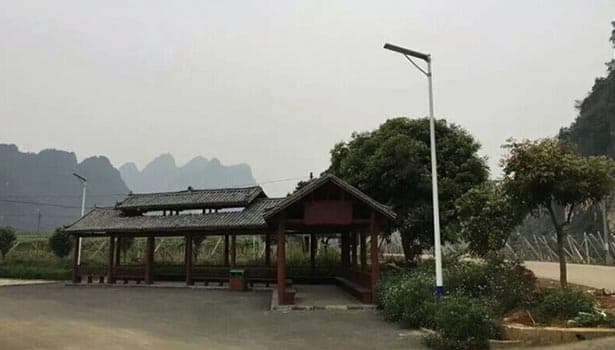
Application Principles for Solar Street Lights with Sensors
Technology Adaptation for Climate Challenges
In rainy and foggy areas, solar power supply is greatly affected by the weather, and a “solar + grid” dual power supply complementary program is required. The system automatically switches the power supply mode through voltage detection: when it is cloudy and rainy for more than 3 consecutive days and the battery power is less than 20%, it automatically switches to grid power supply to ensure uninterrupted lighting.
Accurate design based on geographic data
Before installation, local meteorological data should be analyzed in detail: in areas with more than 2000 hours of sunshine per year, the solar panel area can be configured according to 1.5 times the average daily power consumption; in areas with less than 1,500 hours of sunshine, it is necessary to increase the capacity of the batteries to 3 days of reserve power. At the same time, combined with the GIS geographic information system, light simulation is carried out at the street light installation location to ensure that the average daily effective light exposure time of the solar panels is ≥4 hours, so as to maximize the energy efficiency ratio of the system.
Lighting Optimization Based on Traffic Flow
In highways and other traffic-intensive areas, the sensor response time should be controlled within 0.3 seconds, and the brightness should be increased by no less than 80% to ensure that drivers have enough sight distance to judge the road conditions. In sensitive areas such as schools and hospitals, the light switching adopts the dimming mode (transition time of 5-8 seconds) to avoid strong light stimulation. In a municipality directly under the central government's bypass highway renovation project, this type of design has reduced the rate of nighttime traffic accidents by 28%.
Diversified Application Scenarios of Solar Street Lights with Sensors
Urban and Rural Road Lighting
In rural and township roads, solar streetlights with sensors solve the problem of insufficient coverage of the traditional power grid. The case of a poverty-stricken county shows that after deploying 2,000 such streetlights, the coverage rate of rural road lighting has increased from 35% to 85%, while the operation cost is only 1/5 of the traditional solution. the lamps adopt IP65 or higher protection level, which can withstand the harsh environment of rainstorms, sand and dust, and the maintenance cycle can last for up to 12 months.
Public Area Lighting
Street lights in urban squares and parks are often designed with landscaping, combining sensors and artistic modeling. For example, a seaside park using conch-shaped street lamps, built-in PIR sensors and light sensors, absorbing solar energy during the day, unoccupied at night with 30% brightness outlines the contours of the people close to the 80% brightness to illuminate the path, not only to meet the functional requirements and become a landscape highlights.
High-end Lighting
Golf courses, villas and other places with high lighting quality requirements usually adopt the “multi-sensor fusion + remote control” program. Managers can set the lighting strategy for different areas through mobile APP: microwave radar + PIR dual detection is used in the golf course fairway area to ensure the immediate response of the light when the player swings the club; the villa walkway is set to the “human body sensing + timer control” mode, which automatically switches to 15% lower brightness after 12 o'clock at night to avoid disturbing the residents' rest. Transportation Lighting
Lighting for Traffic Facilities
In dangerous road sections such as highway curves and tunnel entrances and exits, streetlights are linked with the traffic signal system: when the sensor detects a vehicle entering a curve, not only does the streetlight light up, but also the streetlights in the 200-meter range in front of it, forming a “light guidance” effect. After the application of this technology on a mountainous highway, the accident rate of curves decreased by 42%, and the subjective safety score of drivers increased by 35 points (out of 100 points).
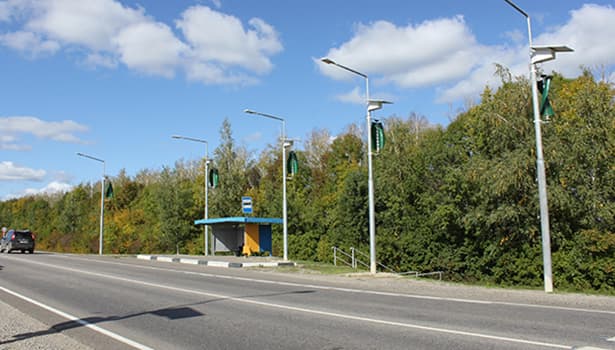
Buying Guide for Solar Street Lights with Sensors
Core Parameter Evaluation
Optical performance index
-Luminous efficacy: ≥150lm/W to ensure energy conversion efficiency.
-Color temperature: 4000-5000K (neutral white light) is recommended for road lighting, and 3000-3500K (warm light) is optional for square and other areas.
-Uniformity of illumination: ≥0.4 for main roads, ≥0.35 for secondary roads, to avoid uneven brightness and darkness.
Solar power supply system configuration
-Photovoltaic panels: monocrystalline efficiency ≥ 22%, the area is calculated according to the average daily sunshine hours (e.g., 4 hours per day, 60Wp photovoltaic panels are required for every 10W light source).
-Battery: lithium iron phosphate battery priority, capacity to meet the lighting needs of 3 consecutive rainy days (formula: average daily power consumption × 3 × 1.2 safety factor)
Sensor technical parameters
-PIR detection range: horizontal angle ≥ 120 °, distance ≥ 8 meters
-Microwave radar detection range: distance ≥ 15 meters, strong ability to penetrate rain and fog
-Response time: from detection to brightness increase ≤ 1 second.
Four-Step Decision-Making Process
Demand analysis of installation scenarios
Define the key indicators of the application scenarios: rural roads need to focus on the waterproof and dustproof grade (IP65 or above); urban trunk roads need to emphasize the dimming response speed; scenic lighting focuses on the appearance design and spectral comfort. You can make a demand matrix to rank the indicators in order of importance (1-5 points), to provide a basis for subsequent selection.
Matching of sensor types
Select sensor combinations according to environmental characteristics: microwave radar + PIR dual sensors are preferred in rainy and foggy areas; PIR + light dual sensors are preferred in residential areas; millimeter-wave radar can be configured in long-distance scenarios such as highways to achieve early detection 20 meters away.
Evaluation of system integration capability
Examine the functions of the supplier's intelligent management platform: whether it supports remote dimming, fault alarms, energy consumption statistics, etc.; whether the platform is open to API interfaces, so that it is easy to dock with the smart city system. A park project has realized data interoperability with security and environmental monitoring systems and increased management efficiency by 40% by using a street light system that supports API interface.
Total life cycle cost measurement
In addition to the procurement cost, it is necessary to calculate the comprehensive cost during the 5-year cycle:
-Energy cost: solar power supply ratio × 0 (electricity cost) + grid supplement ratio × actual electricity cost
-Maintenance cost: average annual maintenance times × single cost
Replacement cost: the replacement cycle and cost of light source and battery. Usually, the 5-year total cost of ownership (TCO) of solar street light with sensors is 30%-40% lower than that of traditional solutions.
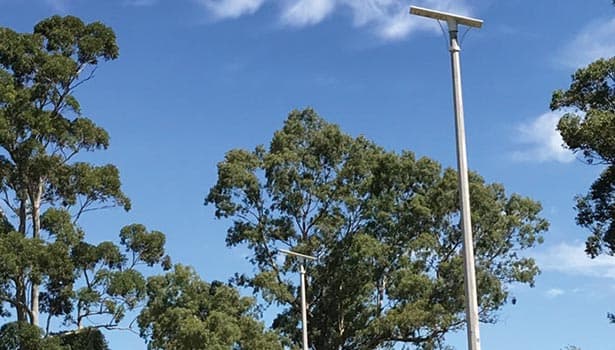
Conclusion
Solar street light with sensors is not only a lighting technology innovation, but also a basic node for smart city construction. This technology is reshaping the development pattern of global outdoor lighting with its triple value of “energy-saving, safety and ecology”.
In this green intelligent revolution, the two-way drive of technological innovation and application will continue to promote. For city managers, embracing this technology is not only an optimal choice for energy costs, but also a strategic move to practice the concept of low-carbon development and build an eco-smart city. When every street light can “sense the environment, intelligent response, self-optimization”, we will usher in not only a brighter night, but also a sustainable future of harmonious coexistence of man and nature.

